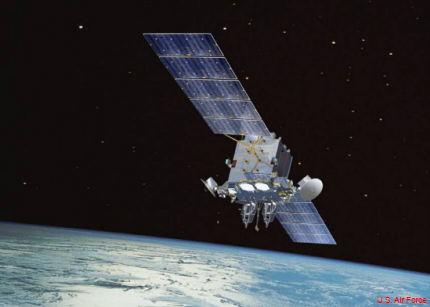Air Force gives Lockheed $735M deal for satellite support
The contract calls for continued support of three generations of satellite communications.

An Advanced Extremely High Frequency satellite.
The Air Force has awarded Lockheed Martin a $735.5 million contract for continued support of three key national security satellite systems.
The sole-source award, for work expected to run through Nov. 30, is for sustainment of the Advanced Extremely High Frequency (AEHF), Milstar, and Defense Satellite Communications System III, three generations of satellite systems that provide secure communications for users ranging from the president to U.S. ground forces.
Lockheed has been the prime contractor for each of the systems, which are managed by the Space and Missile Systems Center at Peterson Air Force Base, Colo.
A quick look at the systems:
AEHF
The Advanced Extremely High Frequency system is the next generation of the Air Force Space Command’s communications systems. It’s planned to be a five-satellite constellation operating in Geosynchronous Earth Orbit, with three satellites being launched already—the first in August 2010, the most recent in September 2013. AEHF will provide secure, jam-resistant global communications for high-priority assets served the U.S. armed force as well as those of the United Kingdom, Canada and the Netherlands.
Intended to replace the Milstar system it incorporates Milstar’s low and medium data rate signals (75 to 2400 bit/sec and 4.8 kilobits/sec to 1.544 megabits/sec) while adding a new signal that will boost rates to about 8 megabits/sec. Like Milstar it’s designed to operate even during a nuclear conflict.
Milstar
Milstar dates to February 1994, when the first of its six satellites—five are currently operational—was launched. The sixth was launched in April 2003. Milstar has proved to be reliable—the Air Force calls its “the FedEx of communications systems”—and provides low and medium data rate service (the aforementioned range of 75 bits/sec to 1.544 megabits/sec) between 65 degrees latitude north and 65 degrees latitude south.
Defense Satellite Communications System III
Considered the workhorse of military communications, DSCS provides communications over a wider, though less protected, bandwidth than Milstar, and features transmission speeds of up to 200 megabits/sec. Fourteen DSCS satellites were launched between 1982 and 2003, with eight of them still working.
With each of its satellites intended to operate for 10 years, DSCS is being replaced by the Wideband Global SATCOM system, which features data rates ranging from 2.1 to 3.6 gigabytes/sec.